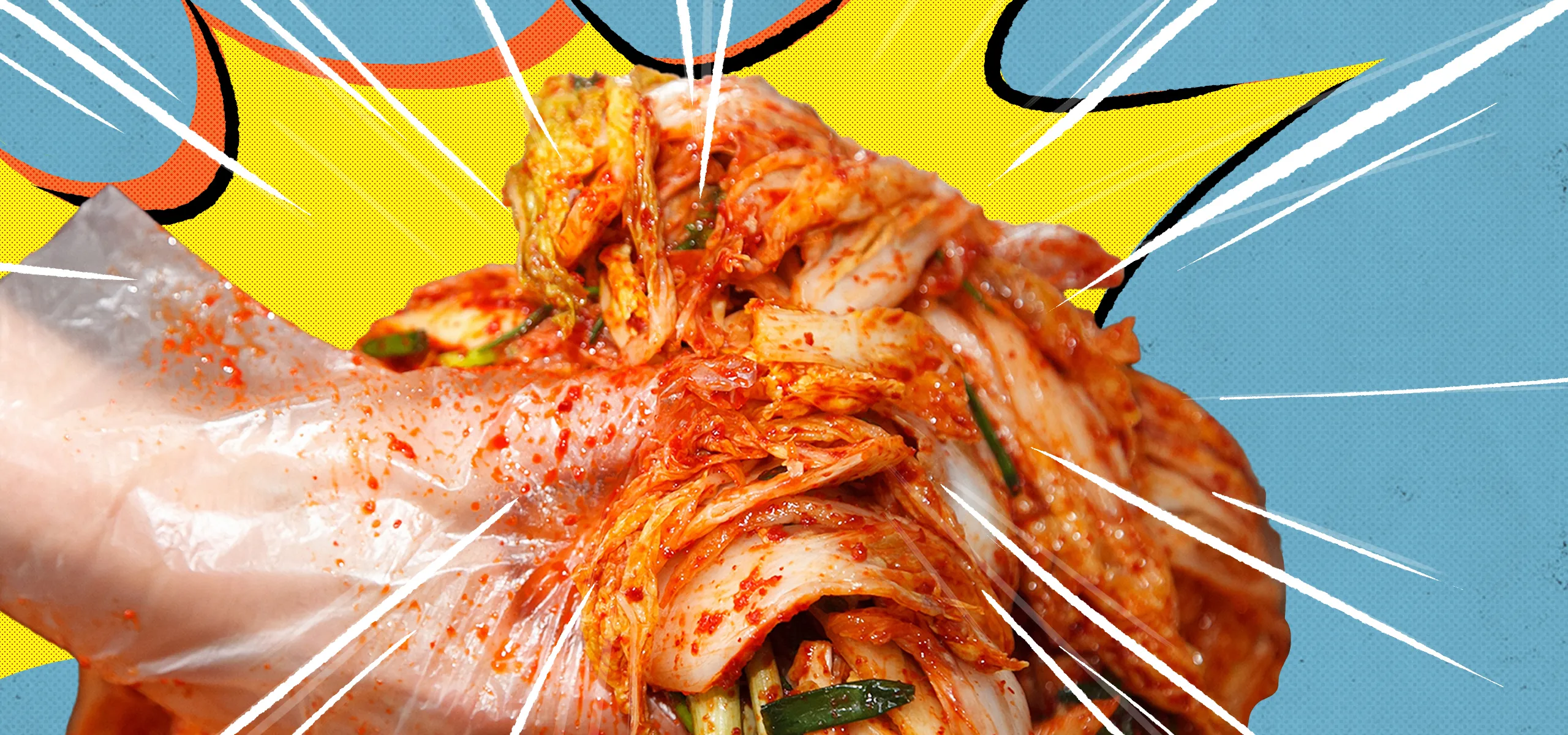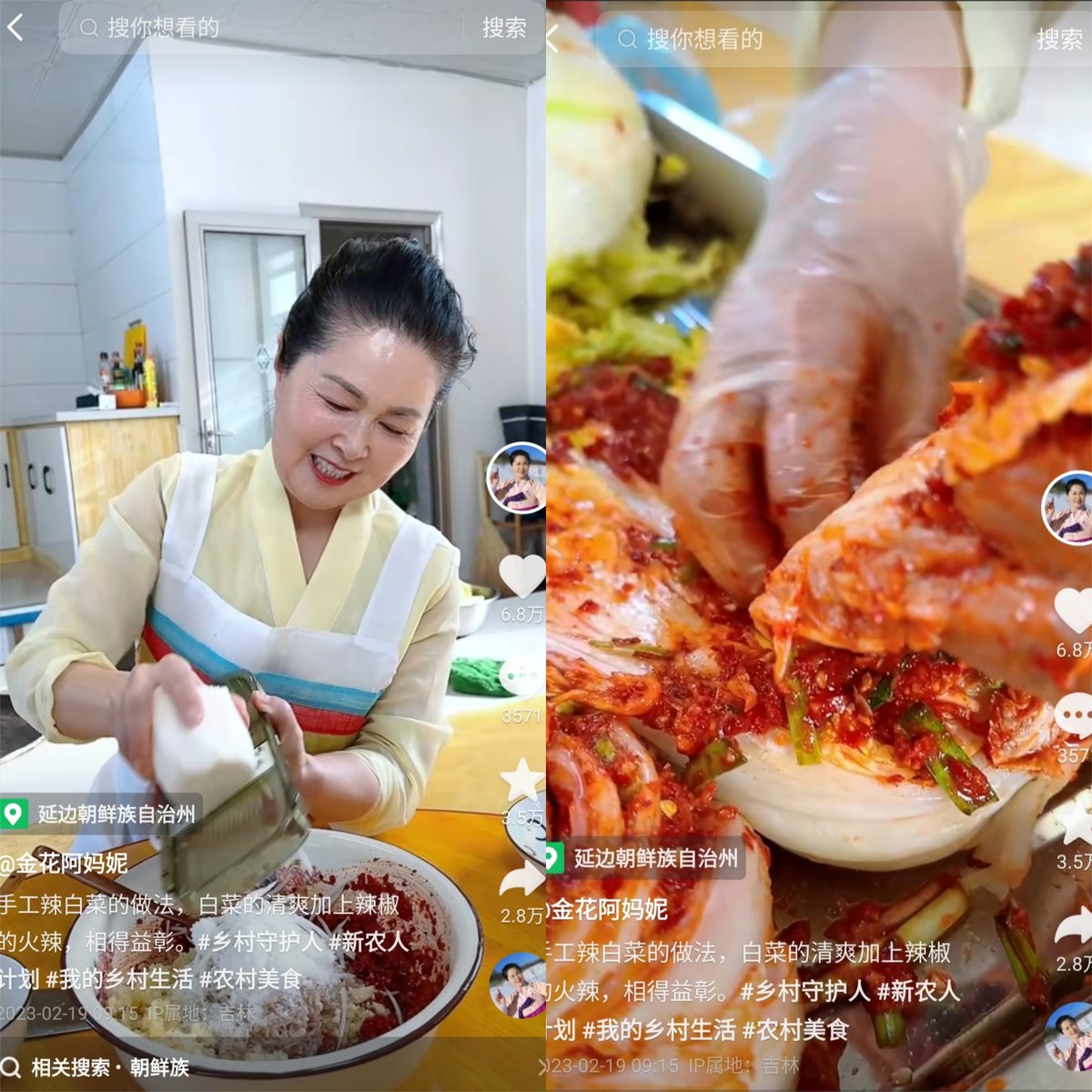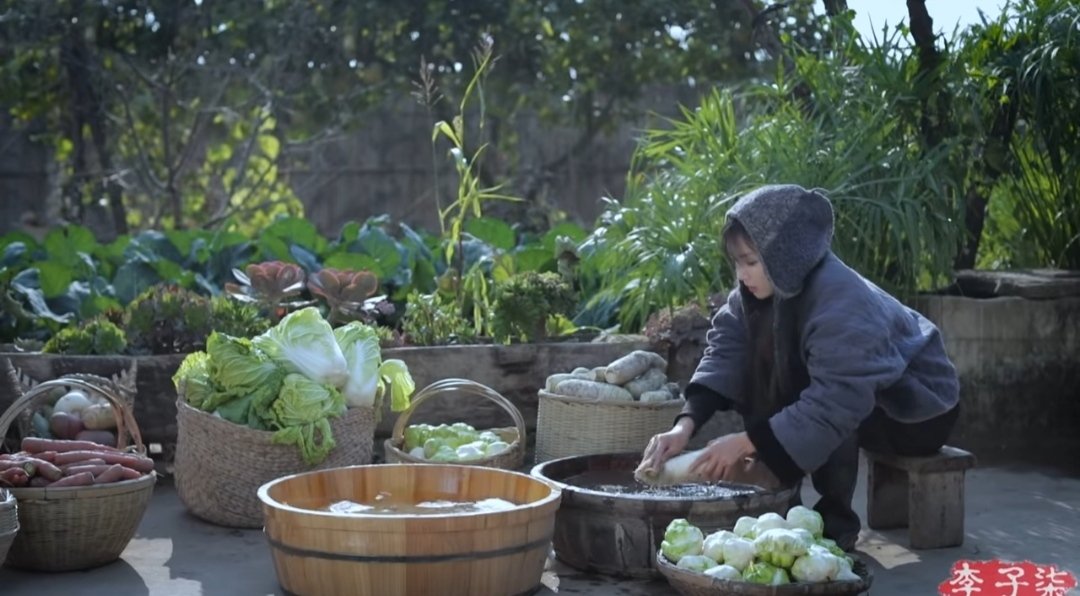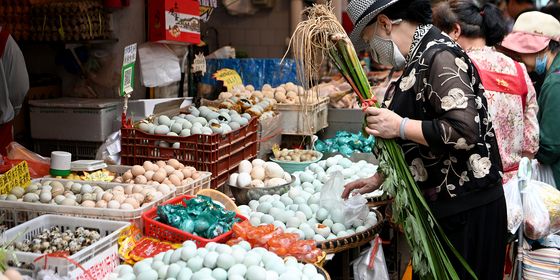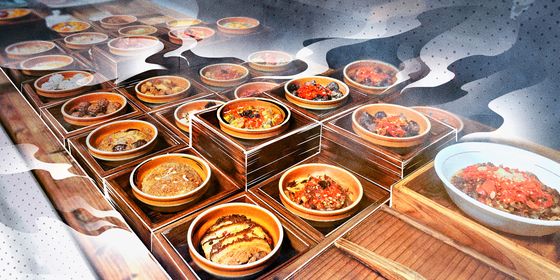Discover how spicy cabbage connects people across space and time in old and new ways
“Of course, how on earth could I not!” erupts the Chaoxianzu (ethnically Korean Chinese) man from a small village by the North Korean border in Jilin province when asked whether he still makes labaicai by hand. Labaicai (辣白菜), Chinese for “spicy cabbage,” is the popular fermented food known as kimchi on the other side of the border (and in the West).
Two names, same difference: Fermented foods are so common throughout human history that their exact origins are impossible to pin down. They have roots and influences everywhere. While the world-famous restaurant Noma in Denmark is credited with fueling a global trend around fermented foods in recent years, this natural and environmentally friendly way of preparing and preserving foods—basically by means of controlled decay—is much older. According to Marie-Claire Frederic’s 2020 book Neither Raw Nor Cooked, as early as 1.5 million years ago human ancestors discovered this way of cooking—a whopping 700,000 years before mastering fire.
According to China’s National Ethnic Affairs Commission, some farmers emigrated from the Korean Peninsula to northern China over 300 years ago. Their fermented cabbage culture followed them and discovered a new home in China’s Northeast, or Dongbei. From humble beginnings, it has endured until now and in Jilin by the North Korean border as much as elsewhere, it connects people across time and space in old and new ways.
Yanbian Korean Autonomous Prefecture boasts a population of over 730,000 Chaoxianzu Chinese. Here, spicy cabbage takes on a regional twist, as a Yanbian specialty known as “apple pear (苹果梨)” is added to lower the acidity, making the cabbage sweeter and adding a decadent crunch factor; however, there are more additions than simply sliced pear to allow the local spicy cabbage to achieve its richer flavor.
Retired social media enthusiast Jinhua is passionate about her new hobby—sharing recipes and Yanbian food culture on Douyin (China’s TikTok). “Some fans say when they try the recipe, they get lost in the process,” she says. Hence in her video on making Yanbian spicy cabbage, she demonstrates three foolproof steps.
First, crude salt is sprinkled on the cabbage, which is then pressed with rocks (or something equally heavy) and left for the night. After that, the salt is rinsed off and hot water is poured into a basin of chili powder to make it sticky. Various regional ingredients like pear, radish, ginger, garlic, onion, leek, coriander, ground-up seeds, shrimp paste, fish sauce, and sugar are all mixed into the hot basin. Last, this concoction is “massaged” into the cabbage—layer by layer—until it is ready.
“A hundred people make a hundred spicy cabbages,” says Jinhua. There is no single recipe and everyone can customize the flavor by adjusting the ingredient proportions. “But don’t add too much ginger, otherwise it will taste bitter,” she says.
In the neighboring Liaoning province, the city of Dandong on the border of China and North Korea is home to 39 ethnic groups, including 17,000 Chaoxianzu. Unsurprisingly, spicy cabbage is beloved by one and all.
“I like how versatile spicy cabbage is,” says Bi Ying, a 35-year-old lawyer from Dandong. “It goes well with everything from cold soba noodles (朝鲜冷面) to tofu soup and barbecue pork.”
“My family doesn’t know how to make it, but we can enjoy it anyway. In Dandong, there are markets selling spicy cabbage everywhere,” she says.
Every February, there is a spicy cabbage festival where people sing, dance, and make spicy cabbage together. They even mix 100 kilograms of rice, spicy cabbage, and other fresh ingredients in a huge pan to make bibimbap (朝鲜拌饭) for everyone to share.
For Jilin tour organizer Zhang Wei, making Yanbian food is a must-do on any worthwhile travel itinerary. “People love to swing wooden mallets to smash the glutinous rice into dagao (打糕) and rub spicy sauce on the cabbage,” she says. “Everything tastes better after some hard work.”
Early-rising travelers are able to explore a waterside market in the prefectural capital, Yanji, which opens only from 5 a.m. to 8 a.m. At 5 a.m. the market is already bustling with energy. It is the perfect place to have an authentic Yanbian-style breakfast, as stalls here sell everything from beef rice soup (牛肉汤饭) to rice sausage (米肠) and spicy cabbage dumplings (辣白菜饺子). A popular souvenir for tourists and a staple pantry item for locals is the takeaway spicy cabbage.
This spicy cabbage culture has also expanded to the province synonymous with spice: Sichuan in southwestern China. In 2021, Mianyang-based YouTuber Li Ziqi uploaded a video on how to make a spicy cabbage stew using Sichuan peppercorns and bacon; however, her video attracted angry comments from some YouTube users who argued “kimchi is South Korean.”
“I’m Chaoxianzu, and when I watch Ziqi making spicy cabbage, I don’t care who invented the dish, I’m just surprised. ‘Hmm? You eat cabbage like that too!’ This feeling increased my closeness to the Sichuan people,” one Li Ziqi follower responded to the debate.
Sichuan cuisine chef Lan Guijun, who runs a Michelin-starred restaurant in the provincial capital Chengdu, argued in response that Sichuan fermentation techniques were influenced by immigrants from across China and the Korean Peninsula hundreds of years ago.
“Food is not static. It is constantly learning and developing. There is nothing ‘authentic’ but a matter of local adaptation,” Lan commented on the controversy in an interview with Fengmian Media in 2021. “Whether it is kimchi or other pickles, ultimately, it is a different taste of fermentation.”
The love affair with spicy cabbage is not one divided by region. Zhao Lina, a 36-year-old Mianyang local who used to work in a Korean restaurant, prefers kimchi. “Despite being Sichuanese, my throat is not used to spicy food. Kimchi suits me, as it is sweet and not too spicy,” she says. During the lockdown, she stocked up on kimchi sauce, learned how to ferment cabbage herself, and shared it with her neighbors. “Lockdown was boring but kimchi spiced it up,” she recalls.
The spicy cabbage culture is still evolving in China. In 2021, KFC rolled out a burger with beef and spicy cabbage inside. On lifestyle app Xiaohongshu, people share creative ways to make spicy cabbage, including one unique recipe that utilizes the soft drink Sprite.
Perhaps labaicai love has gone too far though. “Whenever I go to bathhouses, I see pools infused with herbs, milk, or wine,” a netizen who goes by the pseudonym Tipsy Panda remarks on Xiaohongshu. “Why not take a dip in a spicy cabbage bath together?”
You Slaw It Everywhere: How Chinese Cabbage Connects Generations is a story from our issue, “After the Factory.” To read the entire issue, become a subscriber and receive the full magazine.





